Abstract
A method for quantitative extraction of oxytocin from blood is described. The disappearance of injected oxytocin from the circulation in rats was shown to depend upon its uptake in the kidneys and in organs of the splanchnic vascular area. In lactating rats there was uptake by an additional organ or tissue, probably the mammary gland. In animals without kidneys or lactating mammary glands and with no circulation in the splanchnic area oxytocin was distributed into a volume greater than the extracellular fluid volume, and after equilibration the concentration in plasma did not change significantly. During severe haemorrhage increased amounts of antidiuretic activity were detected in blood when there was no significant increase in oxytocic activity.
Full text
PDF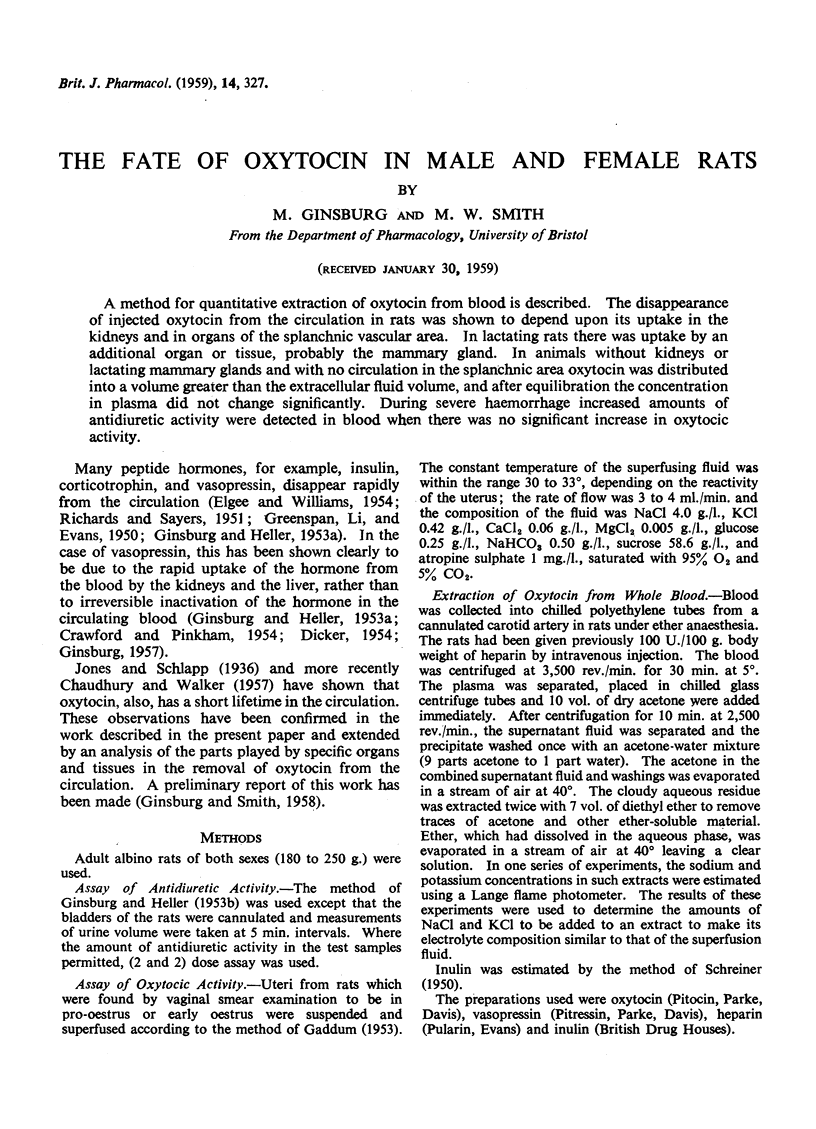
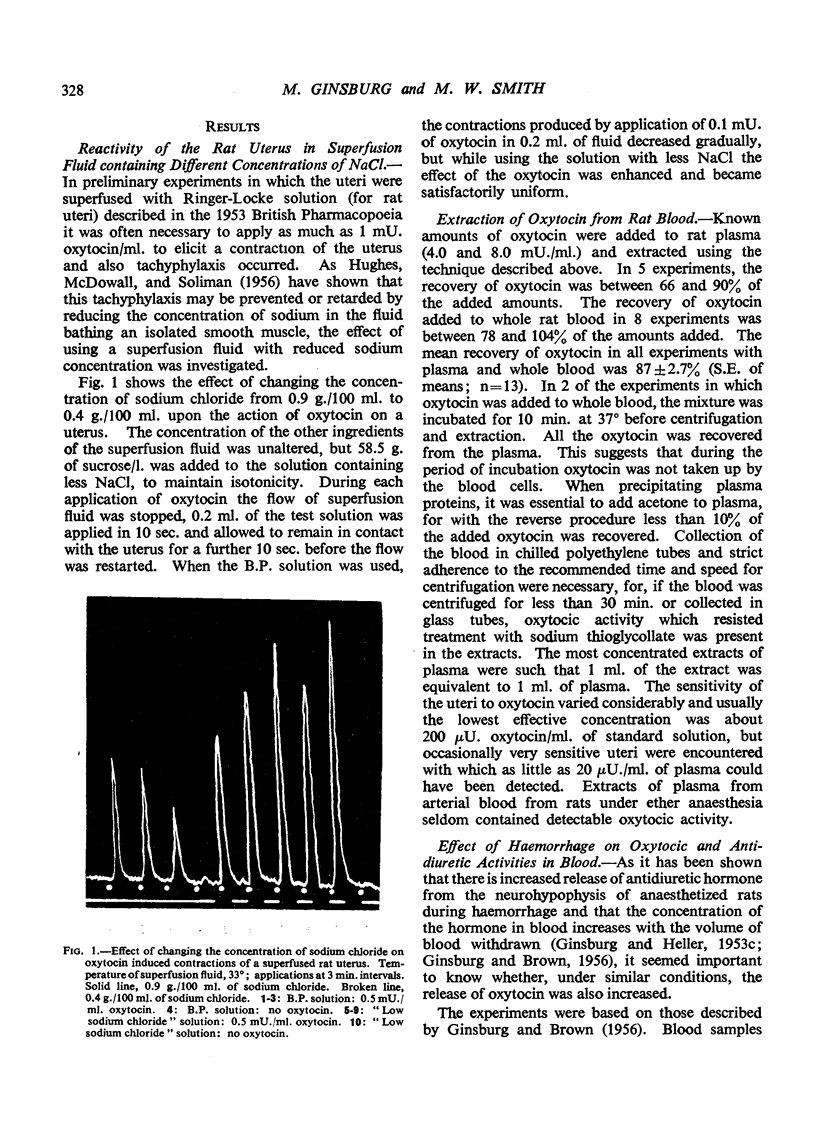
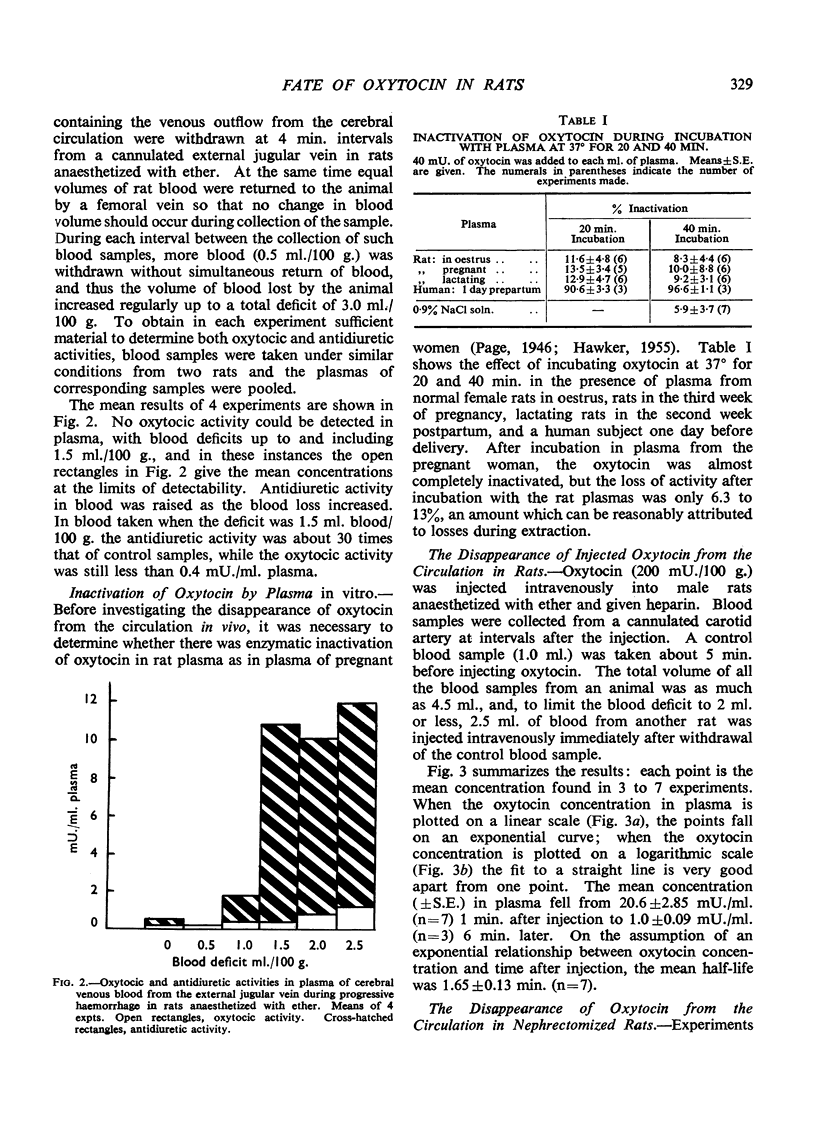
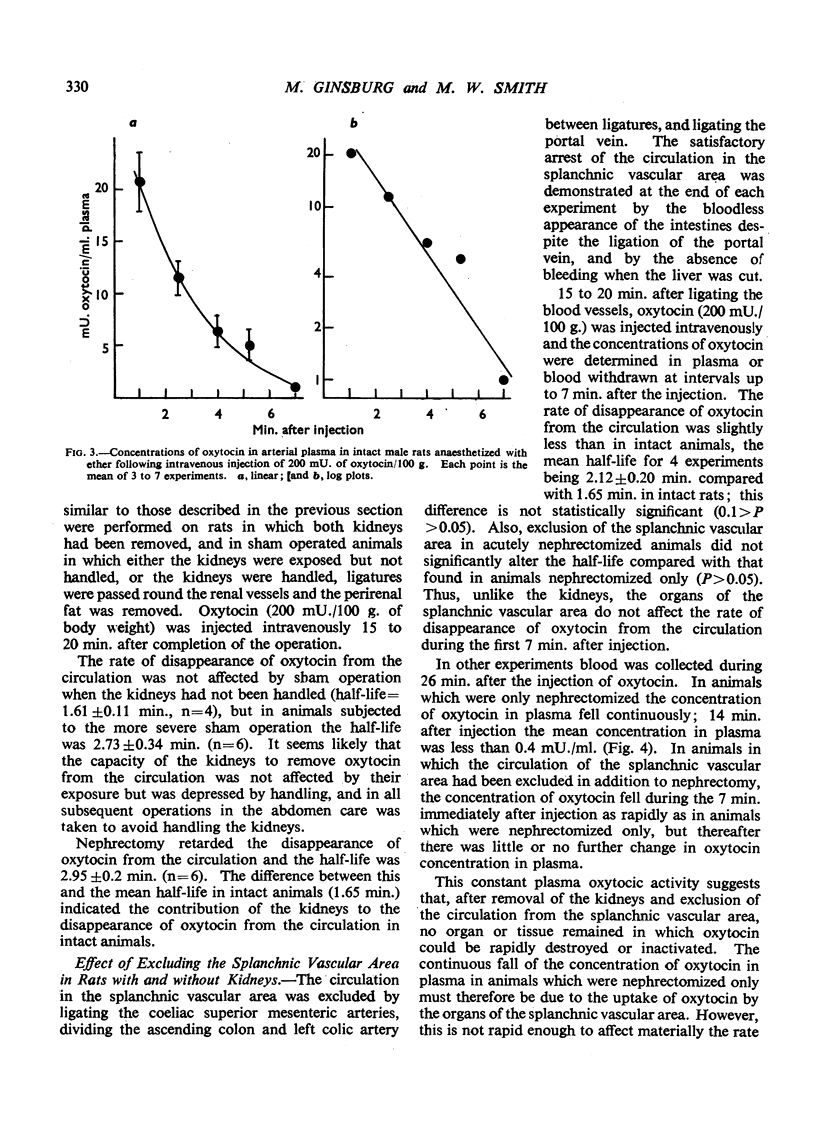
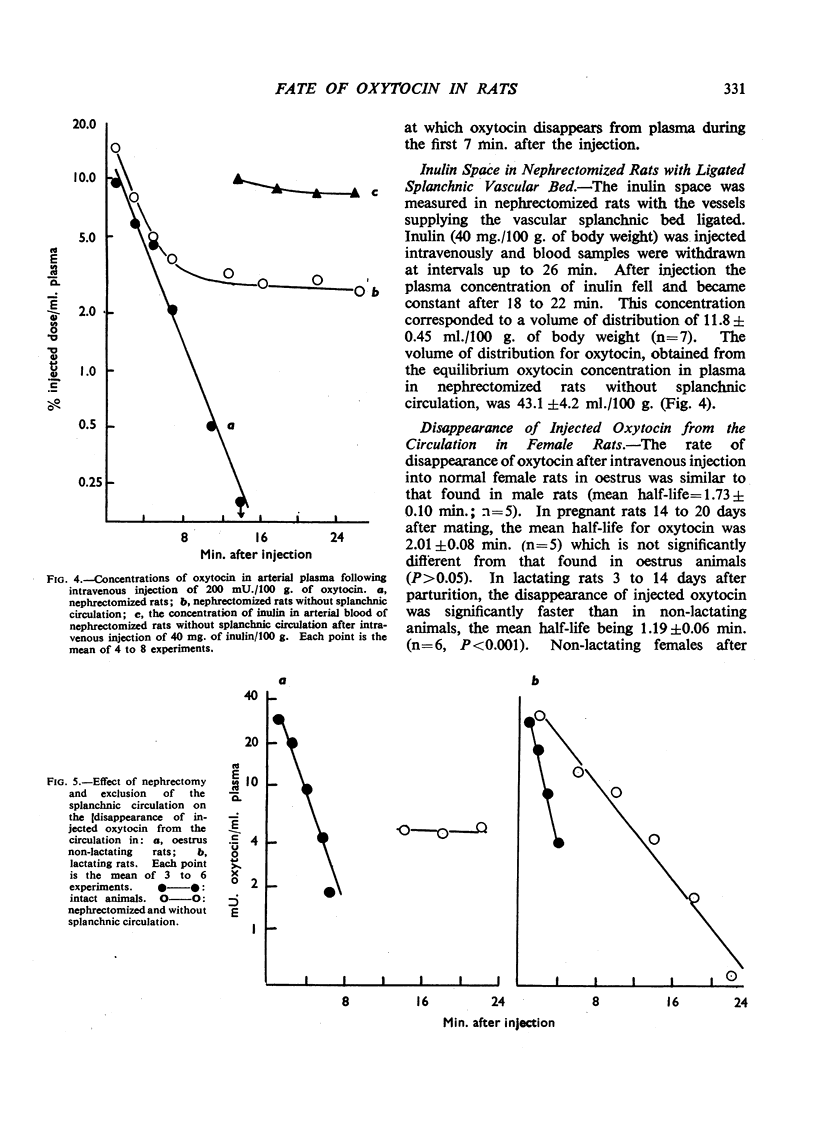
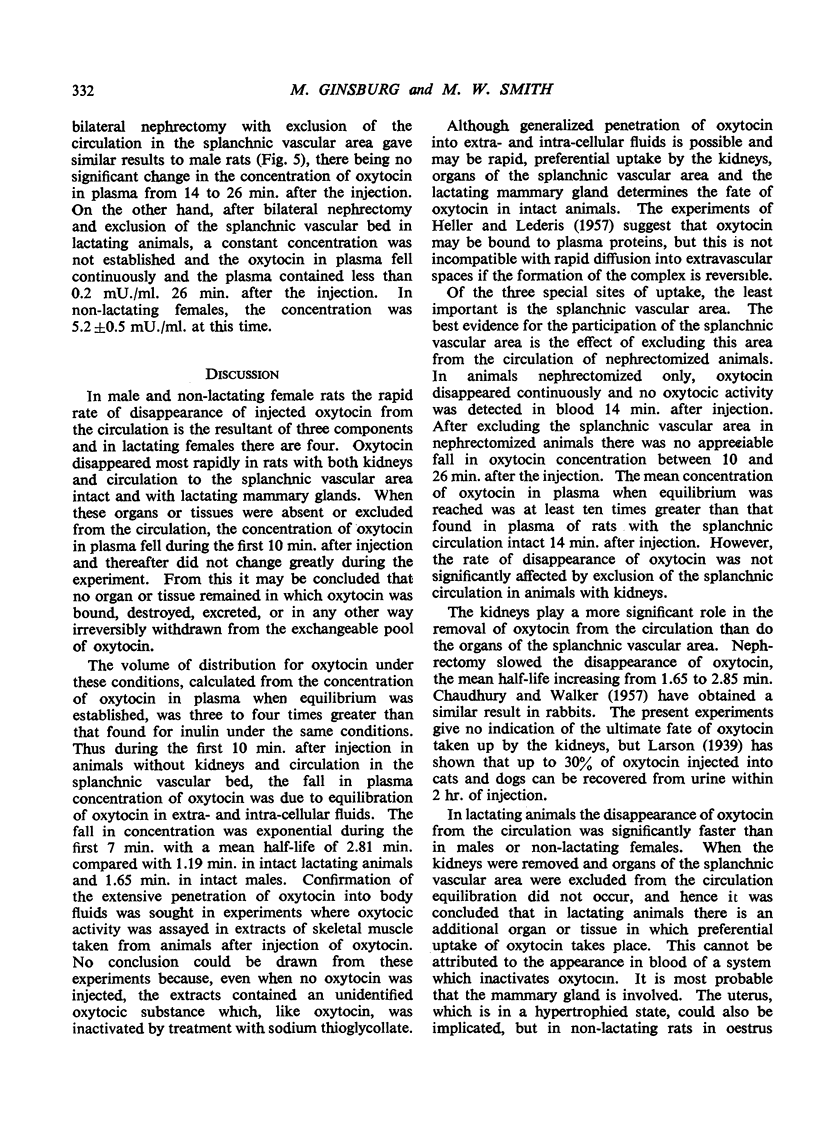
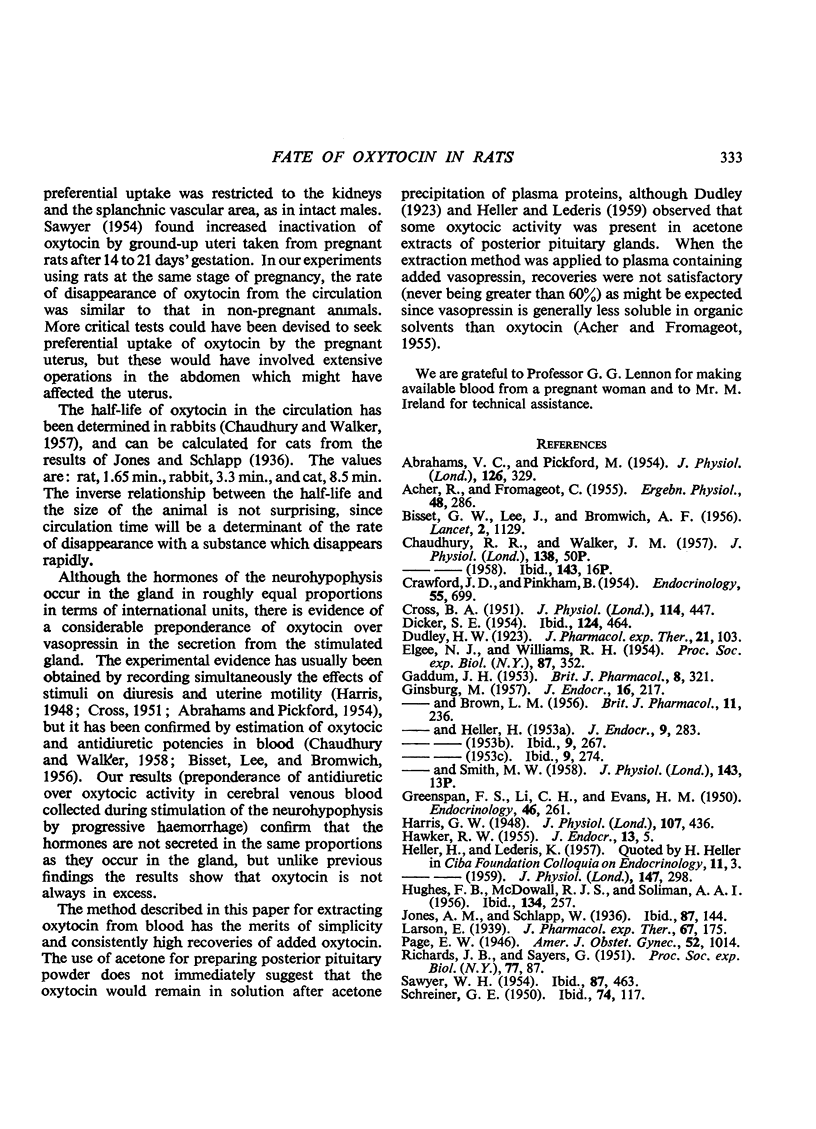
Selected References
These references are in PubMed. This may not be the complete list of references from this article.
- ABRAHAMS V. C., PICKFORD M. Simultaneous observations on the rate of urine flow and spontaneous uterine movements in the dog, and their relationship to posterior lobe activity. J Physiol. 1954 Nov 29;126(2):329–346. doi: 10.1113/jphysiol.1954.sp005213. [DOI] [PMC free article] [PubMed] [Google Scholar]
- ACHER R., FROMAGEOT C. Chimie des hormones neurohypophysaires. Ergeb Physiol. 1955;48:286–327. [PubMed] [Google Scholar]
- BISSET G. W., BROMWICH A. F., LEE J. Oxytocic and antidiuretic activity in blood from the internal jugular vein in man. Lancet. 1956 Dec 1;271(6953):1129–1132. doi: 10.1016/s0140-6736(56)90151-9. [DOI] [PubMed] [Google Scholar]
- CRAWFORD J. D., PINKHAM B. The removal of circulating antidiuretic hormone by the kidney. Endocrinology. 1954 Nov;55(5):699–700. doi: 10.1210/endo-55-5-699. [DOI] [PubMed] [Google Scholar]
- CROSS B. A. Suckling antidiuresis in rabbits. J Physiol. 1951 Aug;114(4):447–453. doi: 10.1113/jphysiol.1951.sp004635. [DOI] [PMC free article] [PubMed] [Google Scholar]
- DICKER S. E. The fate of the antidiuretic activity of pitressin in rats. J Physiol. 1954 Jun 28;124(3):464–475. doi: 10.1113/jphysiol.1954.sp005121. [DOI] [PMC free article] [PubMed] [Google Scholar]
- ELGEE N. J., WILLIAMS R. H. Degradation of insulin-I131 by liver and kidney in vivo. Proc Soc Exp Biol Med. 1954 Nov;87(2):352–355. doi: 10.3181/00379727-87-21380. [DOI] [PubMed] [Google Scholar]
- GINSBURG M., HELLER H. The antidiuretic assay of vasopressin by intravenous injection into unanaesthetized rats. J Endocrinol. 1953 Jul;9(3):267–273. doi: 10.1677/joe.0.0090267. [DOI] [PubMed] [Google Scholar]
- GINSBURG M. The clearance of vasopressin from the splanchnic vascular area and the kidneys. J Endocrinol. 1957 Dec;16(2):217–226. doi: 10.1677/joe.0.0160217. [DOI] [PubMed] [Google Scholar]
- GREENSPAN F. S., LI C. H., EVANS H. M. Disappearance rate of adrenocorticotropic hormone from rat's plasma after intravenous injection. Endocrinology. 1950 Mar;46(3):261–264. doi: 10.1210/endo-46-3-261. [DOI] [PubMed] [Google Scholar]
- HUGHES F. B., MCDOWALL R. J., SOLIMAN A. A. Sodium chloride and smooth muscle. J Physiol. 1956 Nov 28;134(2):257–263. doi: 10.1113/jphysiol.1956.sp005641. [DOI] [PMC free article] [PubMed] [Google Scholar]
- Harris G. W. Further evidence regarding the endocrine status of the neurohypophysis. J Physiol. 1948 Sep 30;107(4):436–448. doi: 10.1113/jphysiol.1948.sp004288. [DOI] [PMC free article] [PubMed] [Google Scholar]
- Jones A. M., Schlapp W. The action and fate of injected posterior pituitary extracts in the decapitated cat. J Physiol. 1936 Jul 21;87(2):144–157. doi: 10.1113/jphysiol.1936.sp003397. [DOI] [PMC free article] [PubMed] [Google Scholar]
- SAWYER W. H. Inactivation of oxytocin by homogenates of uteri and other tissues from normal and pregnant rats. Proc Soc Exp Biol Med. 1954 Nov;87(2):463–465. doi: 10.3181/00379727-87-21413. [DOI] [PubMed] [Google Scholar]
- SCHREINER G. E. Determination of inulin by means of resorcinol. Proc Soc Exp Biol Med. 1950 May;74(1):117–120. doi: 10.3181/00379727-74-17827. [DOI] [PubMed] [Google Scholar]


